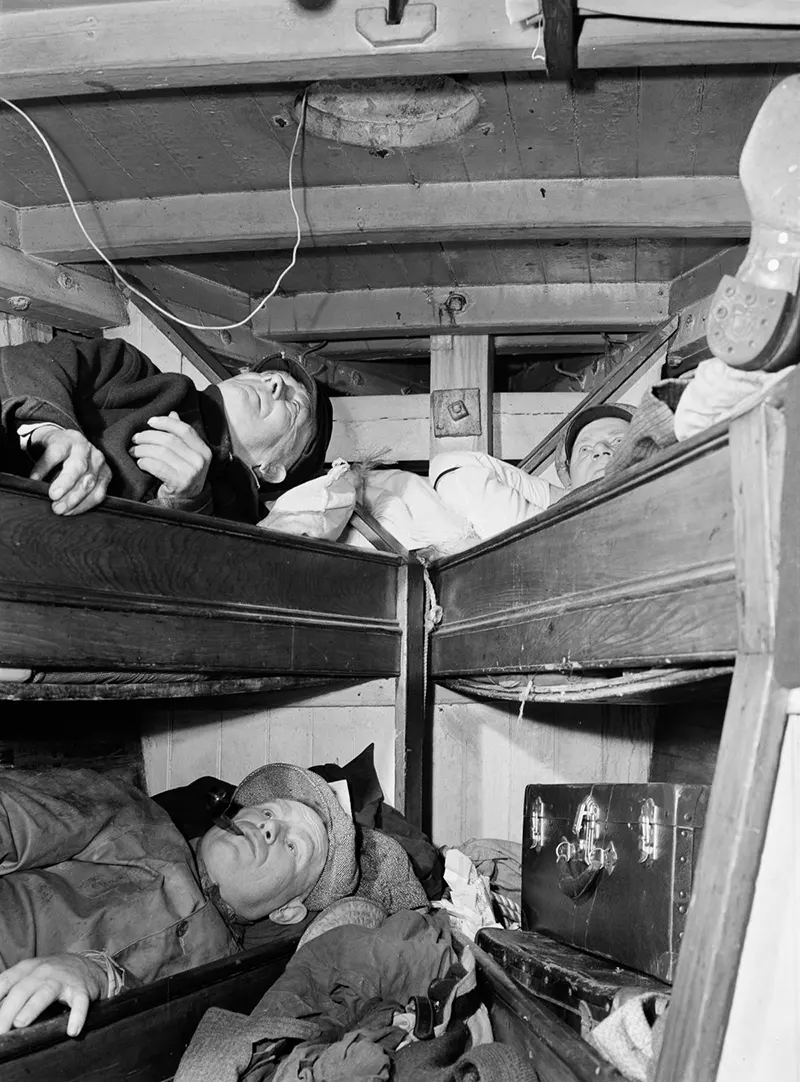 These photos taken by photographer Gordon Parks capture the Fulton Fish Market in lower Manhattan and document the path of a fresh catch from the boats of New England fishermen to the vendors’ stands.
These photos taken by photographer Gordon Parks capture the Fulton Fish Market in lower Manhattan and document the path of a fresh catch from the boats of New England fishermen to the vendors’ stands.
The fish market was originally a wing of the Fulton Market, established in 1822 to sell a variety of foodstuffs and produce.
In November 2005, the Fish Market relocated to a new facility in Hunts Point in the Bronx, from its historic location near the Brooklyn Bridge along the East River waterfront at and above Fulton Street in the Financial District, Lower Manhattan.
During much of its 183-year tenure at the original site, the Fulton Fish Market was the most important wholesale East Coast fish market in the United States.
Opened in 1822, it was the destination of fishing boats from across the Atlantic Ocean. By the 1950s, most of the Market’s fish were trucked in rather than offloaded from the docks.
The wholesalers at the Market then sold it to restaurateurs and retailers who purchased fresh fish of every imaginable variety.
 The Fulton Fish Market was one of New York’s earliest open-air fish markets. From a New York newspaper dated 1831: In New York, there are a number of Markets. Those called Fulton and Washington Markets are the largest. Fulton Market is at the East end of Fulton Street near the East River … The first was formerly situated in Maiden Lane on the East River side, and was called Fly Market.
The Fulton Fish Market was one of New York’s earliest open-air fish markets. From a New York newspaper dated 1831: In New York, there are a number of Markets. Those called Fulton and Washington Markets are the largest. Fulton Market is at the East end of Fulton Street near the East River … The first was formerly situated in Maiden Lane on the East River side, and was called Fly Market.
The Fulton Fish Market initially served primarily housekeepers from the surrounding areas and Brooklyn. However, by 1850, wholesalers had become the main buyers as the market gained prominence.
The Fulton Fish Market is one of the oldest fish markets in the United States, in competition with the smaller Maine Avenue Fish Market in Washington, D.C. The Fulton Market was claimed to be the oldest in continuous operation in one place (since 1822) until it was relocated in 2005.
 The Fulton Fish Market has been of interest to economists as a case study in imperfect competition, despite being a highly centralized market with a large number of well-informed buyers and sellers.
The Fulton Fish Market has been of interest to economists as a case study in imperfect competition, despite being a highly centralized market with a large number of well-informed buyers and sellers.
Using 1992 data, Graddy found that third-degree price discrimination arose in the Fulton market. In particular, Asian customers, who were generally more price elastic, were quoted lower prices than white buyers, by 6.3 cents on average. Graddy attributes this to the different markets served by Asian and white buyers.
Asian buyers were more likely to resell fish whole to retail and fry shops in poorer neighborhoods or sell to establishments in Chinatown where the restaurant sector was highly competitive.
They, therefore, had less scope to pass on prices to their customers than white buyers, who were more likely to resell to less elastic customers.



























(Photo credit: Gordon Parks / Library of Congress / Wikimedia Commons).
